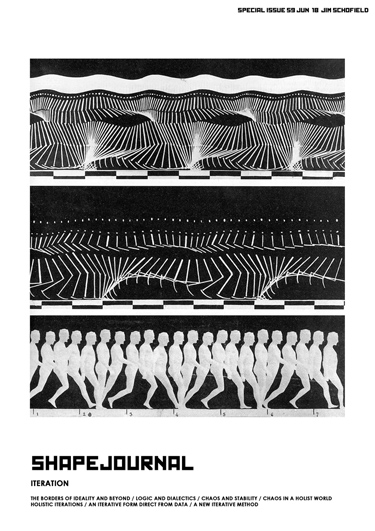Welcome to the 59th special issue of the SHAPE Journal entitled Iteration. But what do we actually mean by this term?
In Mathematics it is a way of trying to find answers through repetition, but it certainly isn’t the usual way of using equations. Originally an invention of pragmatic engineers it then became an extension of Mathematics, giving birth to all manner of wonderous inventions, from fractals to Chaos Theory. It is a fascinating area for sure, but it isn’t what the mathematicians like to pretend it is.
Iteration is a descrete way of approaching the continuous - and a static way of dealing with movement and change. It embodies all the chaos, paradoxes and infinite blow-ups you’d expect from such internal contradiction.
The papers in this short collection are presented in a different way from the usual updates. For it is such a difficult, and yet crucial, area that “the latest” seems both too esoteric and too abstract, and its relevance not immediately apparent.
It certainly wasn’t obvious to me! It has taken about 30 years for me to finally begin to understand iteration’s importance, in providing a very different approach to both Reasoning and Science. So, clearly, delivering the latest developments, without some idea of how it was finally achieved, would also leave most areas unexplained and unaquainted readers cold. So, this collection spans, one way or another, all the significant steps in that ascending trajectory.
First of all, these papers are not part of a complete and final narrative. They, instead, each and every one, come out of an only partly referred-to past, which had certainly left the necessary traces-and-questions in my head, but not yet upon the written page. Nevertheless, the fact that each poses as yet unanswered questions, does ultimately connect up with later papers, and, as it does so, begins to light-up a wholly new path towards Truth, inaccessible from the usual approaches.
As a whole, it brings together the inadequacies of disciplines that cannot deal with real Qualitative Change, such as Mathematics, with the finding of evidence for possible solutions actually within the very tricks and extensions that infer something beyond those steadfast limits, and which become attempts to solve the inherent problems of that discipline’s usual and in fact essential approach.
Indeed, as Hegel had always insisted, progress only resides in what appear to be untenable contradictions..




